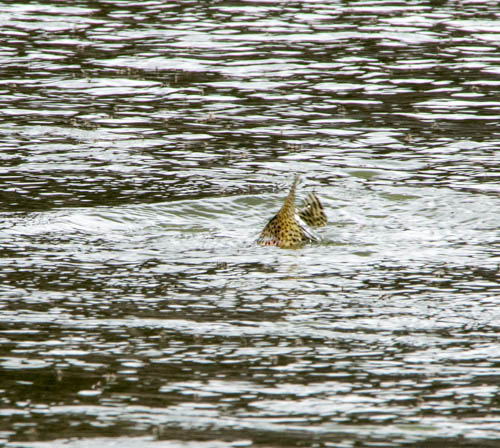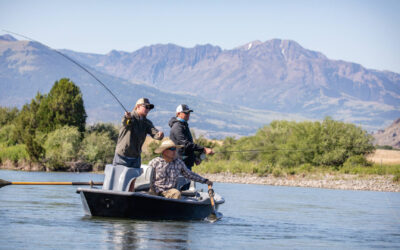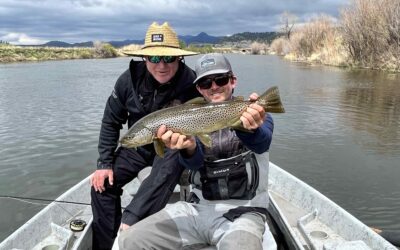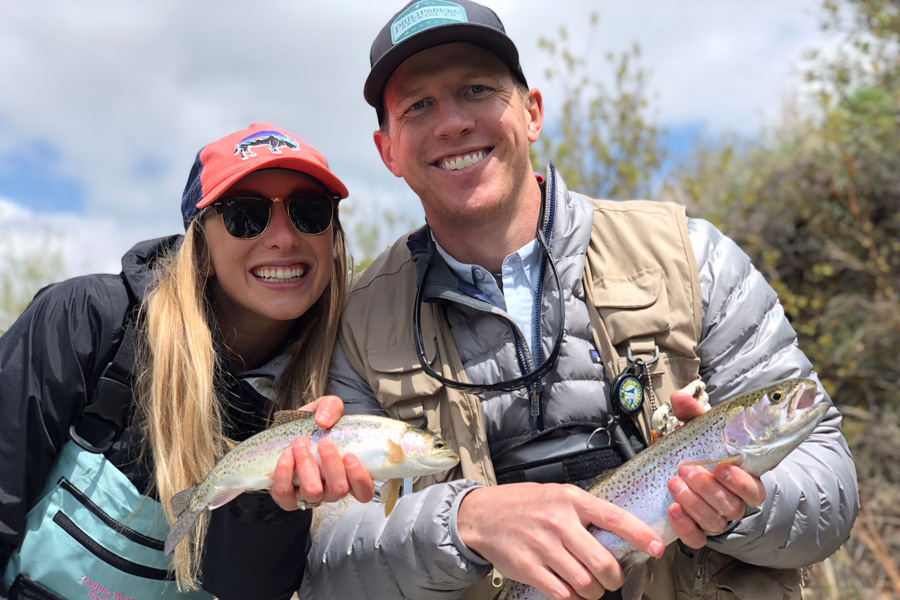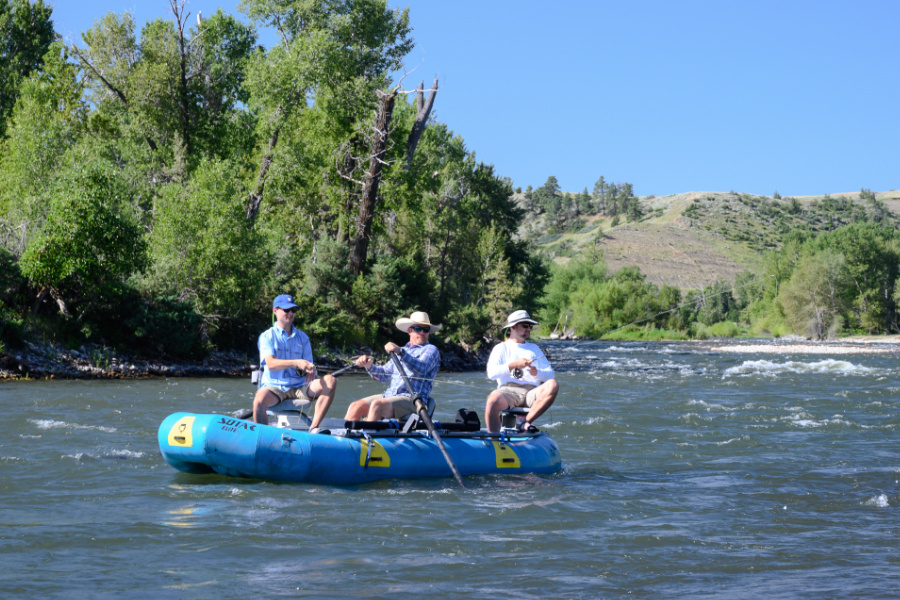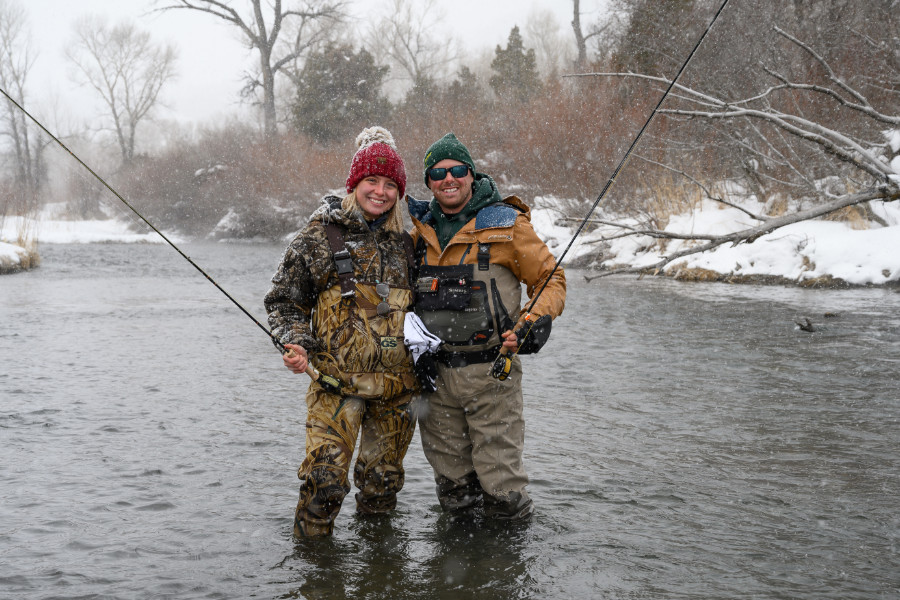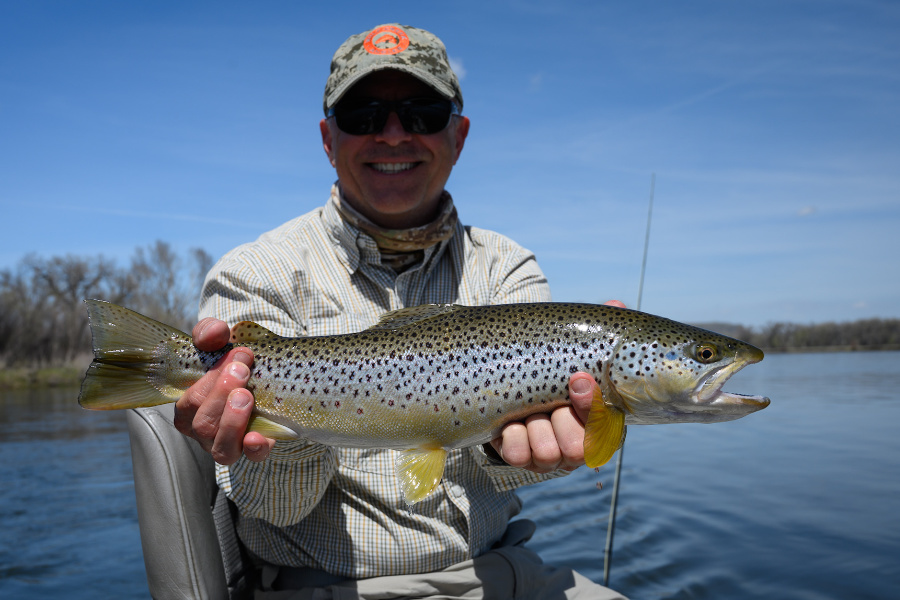The Best Dry Fly Fishing in Montana
Montana is a paradise for dry fly fishing. Anglers will find strong hatches and rising trout throughout the Montana fly fishing season. World-famous hatches of mayflies, caddisflies, stoneflies, terrestrials, and midges on our blue ribbon rivers draw anglers from all over the world to experience dry fly fishing in Montana.
The quality of hatches in Montana is largely determined by when and where you are fly fishing. Our Guide to Dry Fly Fishing in Montana draws on the experience of our Montana fly fishing guides and outfitter that spend their time on the water teaching and sharing with anglers the best dry fly fishing in Montana.
Anglers interested in Montana dry fly fishing should also check out our Top 5 Hatches to Fly Fish in Montana.
Highlights
- Consistent hatches from April-October make for great dry fly fishing in Montana during the prime season
- Freestone rivers including the Yellowstone River and Madison River offer great hatches of stoneflies, caddisflies, terrestrials, and mayflies throughout the summer season that make for great attractor dry fly fishing well suited for anglers of all skill levels.
- The Missouri River tailwater in Craig, MT offers technical dry fly fishing and sight fishing for trophy trout throughout the season. The dry fly fishing is challenging yet rewarding, perfect for advanced and expert anglers.
- The Paradise Valley Spring Creeks and Yellowstone National Park are perfect for dry fly anglers that enjoy wade fishing.
When to Dry Fly Fish in Montana
Dry fly fishing in Montana is good throughout the prime fishing season from April through October. Anglers will find the same hatches, at the same time of year, on most of our rivers. When an angler chooses to dry fly fish in Montana should largely be determined by the experience of each hatch.
During the spring, anglers can count on good hatches of Blue Winged Olives (BWOs) in April, followed by the Mother’s Day Caddis and March Brown hatches in May. The BWO and March Brown hatch are classic mayflies that make for reliably good and technical dry fly fishing. The Mother’s Day Caddis hatch is one of the largest hatches by biomass, often resulting in a blizzard of bugs and huge numbers of actively feeding fish.
June, July, and August comprise the classic summer dry fly fishing season. Montana’s famous stonefly hatches of salmonflies and golden stones generally kick-off mid-June and last into late July. Anglers will also find good hatches of Pale Morning Dun (PMD) mayflies, Western Green Drakes, summer caddisflies, and little yellow sally stoneflies coinciding with these hatches. Many of the largest trout of the year are caught on our freestone rivers during the salmonfly hatch. The evening caddis dry fly bite can be excellent. By August terrestrials make up most of the menu for our wild trout. Dry fly fishing with hoppers, ants, and beetles is often some of the most fun and productive fly fishing of the year.
Fall dry fly hatches generally mirror the spring hatches. Anglers will find good terrestrial fishing through mid-September, but by the end of the month hatches of BWOs and caddis are in full swing. Anglers will encounter both small tan caddis #14-18 as well as the larger October Caddis #8-12. Isolated hatches of Grey Drakes, Callibaetis, and Midges round out the fall dry fly fishing fare. The combination of strong hatches and low angling pressure makes October one of the best months to dry fly fish in Montana.
Where to Dry Fly Fish in Montana
All of our Montana Rivers offer great dry fly fishing for anglers throughout the Montana fly fishing season and make for unique angling experiences. Each river has its own character and charm as well as strong hatches. Freestone rivers generally offer more forgiving conditions and the best stonefly hatches in Montana. Tailwater rivers boast the most prolific hatches and challenging yet rewarding dry fly fishing.
Anglers in Bozeman, MT will be treated to great dry fly fishing on the Yellowstone River, Madison River, Gallatin River, and smaller freestone rivers throughout the early spring, summer, and fall fly fishing seasons. Run-off makes for tough conditions from mid-May through mid-June, but is followed by some of the best hatches of the year. The annual salmonfly hatch is in full swing by late June on the Madison and Yellowstone Rivers followed by the rest of the summer hatches. These rivers offer what is likely the best hopper fishing in Montana in August through mid-September.
Missouri River anglers can expect quality tailwater fishing all throughout the season in Craig, MT. The Holter Dam tailwater section is not as susceptible to run-off as the Bozeman area freestone rivers and anglers will find good hatches of March Browns in late May followed by summer caddisflies and PMDs in early June. The PMD hatch on the Missouri River in June is one of Montana’s best hatches. The dry fly fishing is often technical and demanding, but committed dry fly anglers will be rewarded with shots at trophy brown and rainbow trout.
By late July the PMD hatch fades and Trico hatches pick-up. This hatch is best described as “smoke on the water” and anglers will find huge numbers of trout rising daily. This is likely the most technical dry fly fishing of the season and best suited for advanced and expert anglers. Hopper and terrestrial fishing is good from August through mid-September. Fall hatches of BWOs, Callibaetis, October Caddis, smaller tan caddis, and midges close out the season. Fall is a favorite time to dry fly fish on the Missouri River for many of our long-time Montana fishing guides and anglers.
Montana Dry Fly Fishing Tactics
Choosing the right water to fish is the first step for dry fly anglers. The time of year and daily conditions should dictate which river, stream, or lake to fish. Trout will also hold and feed in different water types depending on the hatch and the stage of life. Expect to find trout feeding in slack water during mayfly and midge hatches and faster water during stonefly and caddis hatches. Trout will generally feed in progressively faster water as a hatch progresses.
Choosing the correct fly pattern is the next challenge. This step is often over emphasized and not as critical as anglers make it out to be. Matching the hatch can be simplified to size, color, silhouette, and stage of life. Identify the hatch and match correspondingly. While learning scientific names of varying mayflies and caddisflies can be rewarding and might impress your angling buddies, all the trout care about is if an offering generally resembles food. Presentation is what catches fish, not flies.
The best advice for successful dry fly fishing is to make your first cast count. Trout that are feeding on the surface are often most willing to eat the first time a fly is presented to them and progressively less likely with each following presentation. Anglers dry fly fishing to actively feeding fish should take their time, set up well, false cast until distance and angles are appropriate, present the fly with appropriate slack, and mend as needed to correct for currents. Mastering the reach cast should be the next step in the learning progression for a dry fly angler. Hook sets should be quick and sharp, but often delayed. Sometimes the take happens quickly. Sometimes painfully slowly. Watch them eat and then set.
The dead drift presentation accounts for 90% or more of all trout caught by dry fly anglers in Montana. Anglers should always start with a dead drift presentation before trying to skitter, swing, twitch, or stip. If you notice several takes coinciding with mending and moving the fly, then it is time to switch it up. Mayflies and midges are almost always best presented with a dead drift. Caddisflies, stoneflies, and terrestrials are quite capable of moving on the water’s surface. Anglers will find moving a dry fly imitation is, at times, more effective.
Montana Dry Fly Fishing Trips
Our Montana fly fishing guides and outfitter are all passionate dry fly anglers. The world-class dry fly fishing in Montana is one of the main reasons we are drawn to fly fish in the Big Sky State. Our Montana fly fishing trips are dry fly focused and we consider it our job to teach anglers the art of dry fly fishing. While there are times conditions demand alternate tactics, anglers can generally expect great dry fly fishing throughout the season on our Montana fly fishing trips.
For anglers that prefer to dry fly fish, we can custom fit your trip itinerary to match you with the best dry fly fishing hatches and opportunities. Anglers interested in dry fly fishing trips with the Montana Angling Company are encouraged to contact us to learn more about our Montana fly fishing trips.
